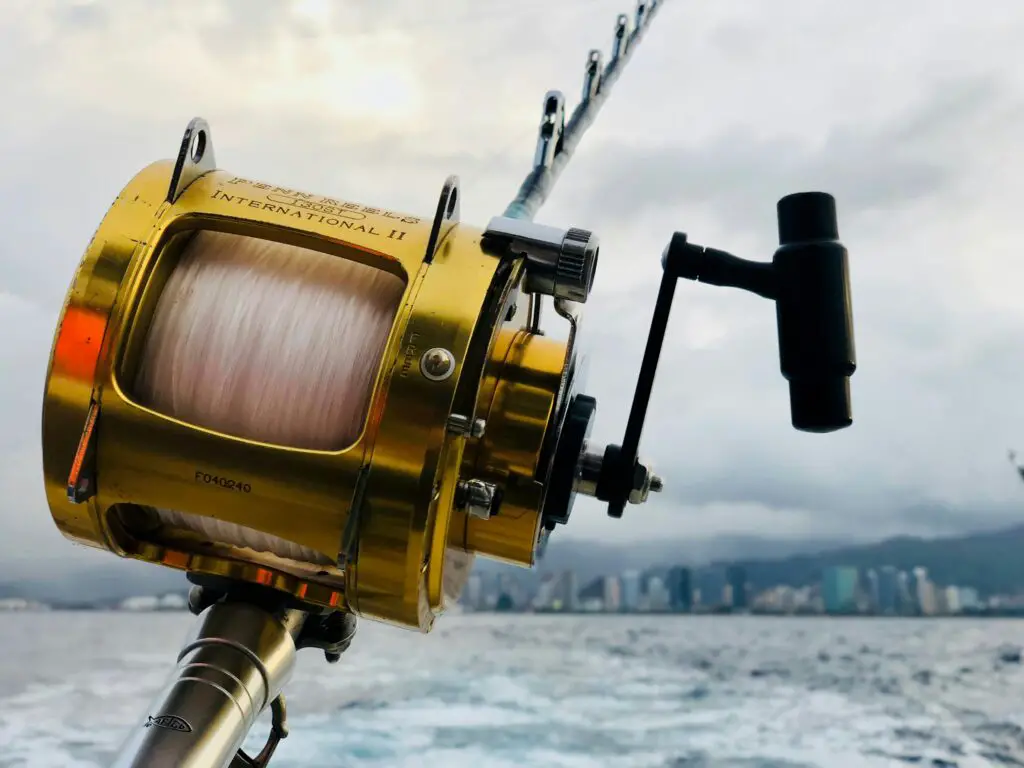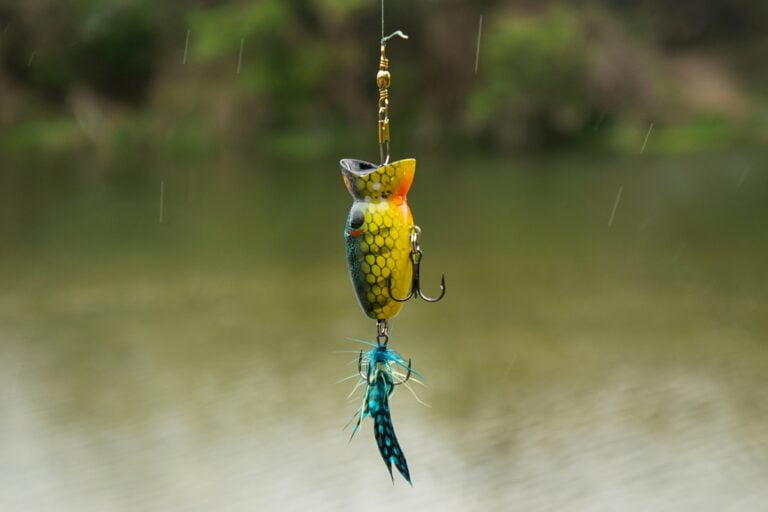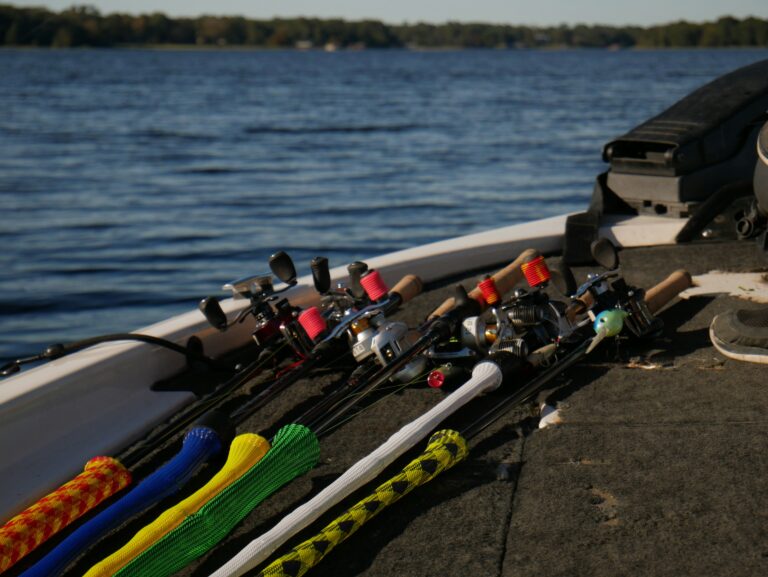How To Choose The Right Fishing Rod And Reel 2024

The perfect catch How to Choose the Right Fishing Rod and Reel
Remember the serenity of a quiet morning spent by the water, the gentle tug on the road, and the joys of reeling in a fantastic fish? For many anglers, these moments are the essence of an ideal fishing ride.
But, let’s be honest, even the most idyllic setting can be dampened by the frustration of a flimsy rod or a clunky reel. The proper fishing rod and reel aren’t simply gear.
They are your companions in the dance of catching that trophy fish. In this manual, we’ll equip you with the expertise to select the suitable setup, making sure your next fishing journey is a memorable one.
That’s an outstanding start to the definition! Let’s extend Section II.C. Rod Selection to provide a more distinct breakdown of each element
The segment you have for A. Type of Fish You’re Targeting is an incredible start, but we can expand on it to offer extra precise steering for selecting a rod and reel:
How To Choose The Right Fishing Rod And Reel 2024
For a satisfying fishing experience, choosing the ideal fishing rod and reel is crucial. The following advice will assist you in making a superior decision:
Type of Rod
Decide what kind of fishing you need to go after. For precise uses, consisting of fly fishing, saltwater fishing, or freshwater fishing, special rods are designed. When deciding on a rod, hold things like electricity, sensitivity, and casting distance in mind.
Rod Length and Power
Longer rods solidify further, while shorter ones offer higher control.
Power (or movement) determines how much the rod flexes under pressure. Light energy is appropriate for smaller fish, whereas heavy energy is good for large species.
Type of Reel
Because they’re adaptable and aesthetically attractive, spinning reels are a remarkable desire for beginners. Baitcasting reels are more controllable, but the learning curve is better.
Reel Size
Match the reel length on your rod. Smaller reels pair nicely with lighter rods, even though large reels are appropriate for heavier rods.
Material and Construction
Graphite and fiberglass are common rod materials. Graphite rods are lightweight and sensitive, whereas fiberglass rods are extra durable.
Seek out awesome construction to ensure sturdiness.
Budget
Establish a price range that balances performance and affordability. You do not have to break the financial institution to collect a reliable setup.
Keep in mind that the top-quality combination depends on your fishing possibilities, objectives, target species, and personal preferences. Happy fishing!
What are some popular fishing rod brands?
Regarding manufacturers of fishing rods, there are a few reputable choices to choose. Here are a few popular ones:
Abu Garcia: Born in Sweden, Abu Garcia is known for lightweight and sturdy reels. Their Ambassadeur collection is awesome for catfish and huge sport fish like pike and musky.
Daiwa: A worldwide superpower in fishing innovation, Daiwa offers products for both saltwater and freshwater anglers. Their spinning reels and open-confronted designs are properly regarded.
St. Croix: Iconic for his or her great, St. Croix rods cater to numerous fishing patterns. Their Legend Surf Spinning Rods are especially regarded.
Ugly Stik: Known for sturdiness and budget-pleasant alternatives, Ugly Stik offers reliable rods. The Ugly Stik Elite Spinning Rod is a famous choice.
Shimano: A relied-on brand, Shimano produces terrific rods. The Zodias JDM Spinning Fishing Rod is a standout.
G. Loomis: Renowned for performance, G. Loomis offers specialized rods. Their Salmon Mooching Rod is superb for salmon fishing.
Remember, your exceptional desire depends on your fishing fashion, finances, and preferences.
How do I choose the right line for my rod?
Selecting the proper fishing line in your rod is essential for a successful angling experience. Let’s dive into the key issues
Types of fishing lines
Monofilament Line: Ideal for beginners, it’s bendy and easy to apply. It comes in diverse colors and is a product of nylon.
Fluorocarbon Line: Clear and almost invisible underwater. Great for clean water situations and extended lure presentation.
Braided Line: Strong and casts farther. Visible, so don’t forget to use an invisible chief.
Line Strength (Test)
Measure in pounds (lb). Match the line power in your goal species’ weight. For instance:
Trout: 4-pound test
Bass: Consider braided strains for superior strength.
Diameter and Material
Monofilament has various diameters (thicker for better energy).
Fluorocarbon is thin and durable.
Braided strains are awesome, sturdy, and visible.
Remember, information about your fishing style, target species, and water conditions will guide your decision.
A. Type of Fish You’re Targeting
Freshwater vs. saltwater fish

Freshwater: Freshwater fish will be inclined to be smaller and less aggressive than saltwater fish. Rods and reels for freshwater fishing can typically be lighter in strength and motion.
Saltwater: Saltwater fish are available in a greater diversity of sizes and fighting styles. Rods and reels for saltwater fishing generally want to be more powerful and robust to address the bigger fish and the corrosive saltwater environment.
Size and Fighting Style of the Fish: Consider the precise fish you’re focused on:
Small fish (panfish, crappie): Ultralight (UL) or moderate (L) electricity rods with speedy or medium motion are pleasant for finesse fishing with small lures and baits.
Medium-sized fish (bass, walleye): Medium (M) or medium-heavy (MH) strength rods with a medium movement offer versatility for plenty of lures and techniques.
Large fish (catfish, muskie): Heavy (H) or extremely-heavy (XH) energy rods with a slow or medium movement are critical for managing powerful fish and heavy lures.
By providing examples of rod strength and movement acceptable for unique fish sizes and stopping patterns, this phase offers anglers a clearer concept of what to look for when selecting their gadget.
That’s an extremely good definition for Section B! It already covers the key factors to recall when deciding on a rod and reel based totally on the fishing area. Here’s how we are able to enhance it with some additional details:
B. Fishing Location
Bank Fishing vs. Boat Fishing

Bank Fishing
Challenges: Limited area for casting and fighting fish.
Ideal Rod: Shorter rods (underneath 6 feet) for higher casting control from an improved role and navigating barriers like timber or brush.
Boat Fishing
Advantages: More flexibility in casting and fighting fish.
Rod Choice: a wider range of alternatives. Longer rods (over 7 feet) may be beneficial for open water to acquire extra casting distance. However, shorter rods are nevertheless beneficial for maneuvering in tight spaces near docks or brushes.
Open Water vs. Brushy Areas
Open Water
Goal: covering more water and focusing on suspended fish.
Ideal Rod: Longer rods (over 7 feet) allow for longer casts.
Brushy Areas
Challenges: casting accuracy and combating fish around limitations.
Ideal Rod: Shorter rods (under 6 feet) offer better manipulation for accurate casts and combating fish in heavy cover. They also help with maneuvering the road around branches and other limitations.
This increased section gives a clearer photo of the particular demanding situations and blessings related to each fishing area, along with hints for the best rod period to address those elements.
C. Rod Selection

Length
Impact: Rod length substantially affects casting distance and maneuverability.
Considerations:
Shorter rods (under 6 feet) are best for tight areas like kayak fishing or boat fishing in brushy areas. Offer extra control for correct casts and fighting fish in close quarters.
Medium-period rods (6–7 feet) are a versatile choice for quite a few techniques and fishing locations. Provide amazing stability between casting distance and manipulation.
Long rods (over 7 feet): super for long casts from the shore or boat in open water. Offer more leverage to fight larger fish.
Power
Focus: The rod’s energy refers to its potential to handle the load of the entice and the combating electricity of the fish you’re focused on.
Power ratings commonly range from extremely light (UL) to extremely heavy (XH).
Matching Power
UL/L: Ideal for mild lures and finesse fishing for panfish, crappie, and trout.
M/MH: properly suitable for a variety of lures and fish species like bass, walleye, and small catfish.
H/XH: Built for heavy lures and scuffling with big fish like catfish, muskies, and saltwater species.
Action
The action refers to how much the rod bends under pressure.
Types of movement
Fast Action: It bends generally within the top 0.33 of the rod. Ideal for setting hooks quickly with heavier lures and for effective fish.
Medium Action: Bends more lightly at some stage in the clean. Offers an awesome balance of sensitivity and flexibility for loads of lures and fish.
Slow Action: Bends deeply into the 0.33 of the rod. It provides splendid sensitivity for feeling light bites and works properly with live bait and finesse strategies.
Material
Graphite (usually called “excessive modulus” or “IM”) is lightweight, sensitive, and transmits vibrations properly for feeling diffused bites. Can be more expensive and vulnerable to breaking if mishandled.
Composite: a mix of graphite and fiberglass. Offers a balance between affordability, sensitivity, and durability.
Fiberglass is long-lasting, less expensive, and extra forgiving for novices. Can be heavier and much less touchy in comparison to graphite rods.
This extended section affords a clearer photograph of the way every factor in rod choice works together to influence your fishing revel.
D. Reel Selection

Reel Size
Focus: Reel size impacts the quantity and sort of line it is able to maintain. Larger reels maintain greater line, which is beneficial for:
Fighting larger fish: More line potential allows you to provide the fish room to run during a combat.
Long-distance casting: More line allows for farther casts to reach remote fish.
Balancing with Rod Power: Choose a reel size that complements the energy of your rod for a cushty fishing experience. A heavy reel on a mild rod will feel unbalanced.
Gear Ratio
Explanation: The tool ratio refers back to the wide variety of times the spool rotates with one flip of the handle. Higher ratios retrieve line faster, while lower ratios offer extra management while reeling in fish.
Choosing the Right Ratio: Consider Your Fishing Method
Fast retrieve techniques (jigging, twitching): Higher gear ratio (6:1 or better) for speedy line retrieval.
Slow retrieve strategies (bottom fishing, trolling): Lower the equipment ratio (four:1 or lower) for higher management and strength while preventing fish.
Drag System
Importance: A clean and effective drag system is essential for effectively controlling line payouts throughout a combat.
Drag Considerations.
Drag Smoothness: Look for a reel with a clean drag that releases line continually to keep it from breaking the road.
Maximum Drag Weight: Choose a drag gadget with a maximum drag weight that exceeds the combating strength of your target fish.
Features
Optional Features: Several capabilities can enhance your fishing enjoyment, but they’re no longer continually crucial. Consider your desires and finances.
One-manner clutch: prevents line from spooling out backwards when the cope isn’t always engaged.
Line counter: This helps measure the depth of your trap.
Ball bearings: increase the smoothness of reeling and reduce friction. More ball bearings usually indicate a smoother reel.
By elaborating on these points, we can provide anglers with a better knowledge of the way reel length, gear ratio, drag system, and capabilities all play a role in selecting the proper reel for their fishing wishes.
Matching Rod and Reel for the Perfect Setup
Now that you’ve explored the key factors for choosing a fishing rod and reel, in my view, it is crucial to recognize how those two components work together. A nicely-matched setup creates a continuing fishing experience, maximizing overall performance and luxury.
Importance of Compatibility
Rod Power and Reel Size: These two elements want to be well suited for top-rated performance.
Mismatched Setup: A heavy reel on a light-powered rod will feel unbalanced and bulky. Conversely, a lightweight reel on a heavy-powered rod could possibly be used to address the weight of the lure and prevent the electricity of a fish.
Impact on Performance: A balanced setup ensures
Effective casting: The rod can well load the reel for effective and accurate casts.
Efficiently preventing: The rod and reel paintings collectively absorb the strikes and runs of a fish, decreasing the chance of line breaks or lost catches.
Comfortable fishing: A balanced setup feels lighter and much less fatiguing to use throughout the day.
Tips for Achieving a Balanced Setup
Manufacturer’s Recommendations: Many rod and reel manufacturers offer mixture units specially designed to paint nicely together. Consider these pre-matched options for a guaranteed balanced setup.
Consult fishing experts: If you’re constructing your setup individually and are seeking recommendations from skilled anglers or the workforce at a fishing address,. They permit you to select a rod and reel aggregate that enhances every different’s energy and weight.
Physical Test: When viable, keep the assembled rod and reel together. Does it feel cushty and properly balanced for your hand? Can you handle the deal smoothly without feeling any stress?
By following those guidelines, you can ensure your rod and reel work in harmony, developing a fishing setup that elevates your enjoyment and achievement on the water.
Additional Tips for a Successful Fishing Trip
Choosing the proper rod and reel is an essential step; however, there are a few additional matters to remember for a definitely successful fishing adventure:
Budget and experience
Be realistic: Fishing rods and reels range in price depending on their excellent capabilities. Set a sensible budget based totally on your revel in degree and fishing wishes.
Start simple: Beginners do not always need the finest device. An excellent starter setup may be affordable and effective for studying the fundamentals. You can usually upgrade your tools as your capabilities and ardor for fishing grow.
Seek expert advice.
Don’t Hesitate: Fishing tackle shops are treasure troves of information and devices. The group of workers at those stores are generally skilled anglers who can answer your questions, advise suitable equipment based totally on your wishes, and even demonstrate how to use certain equipment.
Break in your gear.
Prepare for success: New rods and reels might feel stiff initially. Take some time to “smash them in” by working towards casting and reeling motions with mild weights. This loosens the substances and guarantees that the whole lot functions smoothly while you land that trophy fish.
You’ll have a successful and enjoyable fishing session if you keep these extra pointers in mind. Remember, the journey is simply as critical as the destination. So take hold of your rod and reel, head out to the water, and most importantly, have a laugh!
Conclusion The Right Tools for the Perfect Catch
The thrill of a tug on the line, the exhilarating fight, and the satisfaction of reeling in a wonderful fish—these are the moments that make fishing such a cherished activity. But let’s be sincere: even the most idyllic placement can be dampened with the aid of the frustration of a clunky reel or a flimsy rod.
Choosing the right fishing rod and reel isn’t always just about obtaining a system. It’s approximately an investment in your leisure and fulfillment at the water.
By knowing the factors that impact rod and reel choice, you could create a perfectly matched setup that feels snug, performs flawlessly, and, in the long run, facilitates you achieving your fishing desires.
Imagine the feeling of casting effects, expertly placing the hook, and optimistically combating that trophy fish. With the right rod and reel in your arms, those dream catches emerge as a truth.
So, take your time, follow those recommendations, and get geared up to enjoy the unheard-of pleasure of fishing with the correct setup.
Call to Action Cast off and proportion your tale
Now that you have the knowledge necessary to choose the right fishing rod and reel, it’s time to have some truly remarkable experiences on the lake! Please share your fishing experiences with us.
Head right down to the feedback phase and proportion your reminiscences, tips, and the biggest catches you have landed.
And for the ones eager to dive deeper into the sector of fishing, make sure to go to our net website at [your website address] or observe us on social media [list social media platforms and usernames] for greater fishing suggestions, guidelines, and tasty content material cloth.
FAQs
How do I know what rod and reel to buy?
When choosing a fishing rod and reel, it’s critical to not forget elements like motion, line power, and reel kind. For beginners, opting for a medium-action rod paired with appropriate resistance guarantees an enhanced fishing experience, allowing you to hit even diffused fish bites without difficulty.
What size rod is best?
When it comes to selecting the right rod size, it largely depends on the target species and fishing technique. For trout, panfish, and younger anglers, rods underneath 6’6” offer agility and management. However, for bass fishing strategies like the use of swimbaits and crankbaits, or while concentrated on salmon and steelhead, longer rods over 7′ are preferred for more advantageous casting distance and leverage.
Is a bigger fishing rod better?
When thinking about whether or not a bigger fishing rod is better, it depends on your fishing style and goal species. Longer rods usually offer increased casting distance, best for casting with 12- to 20-pound lines. Opting for a 7-foot, rapid- to greater-speedy-action rod for lures or live baits, or a medium movement for smaller lures or herbal baits, ensures the most fulfilling performance primarily based on your fishing possibilities.
Is spinning or casting a fishing rod better?
When evaluating spinning and casting fishing rods, the choice depends on your talent degree and target fish. Spinning rods are amateur-friendly, providing simpler casting and forgiveness. Conversely, casting rods, with their stiffer construction, are more acceptable for large fish or heavier lures, requiring extra precision in casting.






